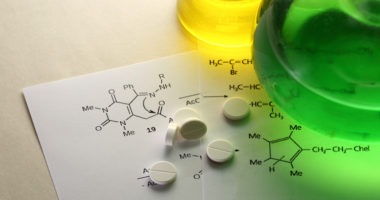Manufacturing and Supply Lines: Injectable Drugs – What’s Trending
Injectable drugs are an increasingly important part of the bio/pharma market with the rise in biologics as well as greater interest for delivery of injectables through self-care methods. What are key trends and technological developments for injectable drugs, including drug-device technology? DCAT Value Chain Insights looks at the latest.
Strong market growth for injectable drug-delivery market
Strong growth is projected for the injectable drug-delivery market. The global injectable drug-delivery market size was valued at $434.08 billion in 2022 and is expected to reach $1.040 trillion in 2032, representing a compound annual growth rate of 10.2%, according to an analysis by the business intelligence and market research firm, Reports and Data (1). Increasing frequency of chronic diseases, rising demand for self-injection devices, greater demand for biologics and biosimilars, and technological developments in injectable drug-delivery systems are major factors driving growth. In addition, interest in patient-controlled drug delivery, convenience, and ease of administration is also driving growth. There is an increasing interest for patient self-administration and preference for home-based care, which is driving interest in self-injection devices. As a result, convenient and user-friendly injectable drug-delivery methods have been created, including pre-filled syringes, autoinjectors, and needle-free injectors. Moreover, injectable drug-delivery systems with technical advances, including wearable injectors, smart injectors, and microneedles are also expected to drive growth.
The Reports and Data analysis divides the market for injectable drug delivery into three main end-use categories: hospitals, clinics, and home care settings. Each of these market sectors has distinctive traits and variables that influence revenue growth.
With a majority share of the industry’s income, hospitals make up the largest end-use market for injectable medication delivery solutions. The second-largest end-use market for injectable medication delivery products is clinics, and the report notes that demand for outpatient treatment is fueling revenue growth in this market. In clinics, the use of injectable medications is mainly reserved for highly specialized procedures, including oncology, fertility, and pain management. Due to an ageing population and a rising preference for home-based care, the home care settings market is anticipated to develop at the quickest rate in terms of revenue during the forecast period through 2032. In home-care settings, injectable medication is often only administered by patients themselves or by trained carers and the convenience and ease of administration is a determinant in the use of home-care based injectable drug delivery.
Start-ups as a source of product innovation
Companies are partnering with start-ups and researchers to drive innovation in injectable drug delivery. For example, in collaboration with ekipa, a leading incubator for open innovation, Gerresheimer is calling on start-ups, companies, students, researchers and young professionals to enable or improve patient care at home with (digital) services and solutions. The best solution will be awarded EUR 4,000 ($4,384), and the winner can work together with Gerresheimer on further development. The call for entries ends on August 27, 2023.
“The idea of allowing patients to continue treatment at home whenever the form of therapy allows is invaluable,” said Maike Wolf, Head of Innovation at Gerresheimer. “We strongly believe that access to healthcare should be as convenient and easy as possible, especially for patients who are in an already challenging situation, for example during or after cancer therapy,”
Gerresheimer says it aims to improve the safety, efficiency and effectiveness of home therapy with its innovative containment and drug-delivery systems for the delivery of liquid medications. In addition, the company is also working on the integration of digital technologies and remote monitoring capabilities to provide patients with care and support.
Earlier this year (2023), Novo Nordisk formed a collaboration with Diabeloop, a company specializing in applying artificial intelligence to improve clinical outcomes for patients with diabetes, to integrate Novo Nordisk’s new generation of connected pens, NovoPen 6 and NovoPen Echo Plus with Diabeloop’s DBL-4pen, a self-learning basal and bolus recommendation app for people with Type 1 and Type 2 diabetes who take multiple daily insulin injections. NovoPen 6 and NovoPen Echo Plus are connected pens with a dose memory function that keeps a history of the last 800 insulin injections and shows on a built-in digital display the number of units administered during the last injection, as well as the time since that injection. Data transfer from the connected pen to an external device.
The companies will apply the technology in a clinical program that will start with an initial multi-brand, multicentric before/after 14-week clinical trial that aims to assess the efficacy and safety of the DBL-4pen mobile application on glycemic control in 40 patients with Type 2 diabetes. Diabeloop will then initiate a dedicated clinical study to assess the efficacy and the clinical benefits of the combined solution connecting DBL-4pen with NovoPen 6 and NovoPen Echo Plus connected pens. NovoPen 6 and NovoPen Echo Plus data will transmit to the DBL-4pen self-learning algorithm, which will recommend the dose of insulin to be injected in real-time from input data such as meals and exercise.
In 2022, Sanofi partnered with Enable Injections, a Cincinnati, Ohio-based company developing and manufacturing on-body subcutaneous drug-delivery systems as an alternative to intravenous (IV) administration. The partnership is part of a EUR 300-million ($309 million) collaboration between Sanofi and the investment firm, Blackstone Life Sciences, to advance the clinical development program for the subcutaneous formulation and delivery of Sanofi’s Sarclisa (isatuximab-irfc), a drug for treating multiple myeloma. The drug is already approved for IV administration, and Sanofi is partnering with Enable Injections for the subcutaneous administration. Enable’s enFuse is a drug-delivery technology designed as an alternative to IV administration to enable subcutaneous delivery of large volumes of up to 50 mL
In 2022, West Pharmaceutical Services, a provider of products and services for injectable drug administration, took a minority ownership interest in Latch Medical, a Dublin, Ireland-based provider of vaccine and biologics delivery technology. Latch Medical’s Pharma Latch technology provides two delivery-device platforms that allow for intradermal delivery of vaccines and biologics by using either hollow or coated microneedles to deliver and disperse vaccine and biologics payloads. Latch Medical was spun out of the University College Dublin in 2019.
Reference
1. Reports and Data, “Pharma and Healthcare – Injectable Drug Delivery Market,” April 2023.






